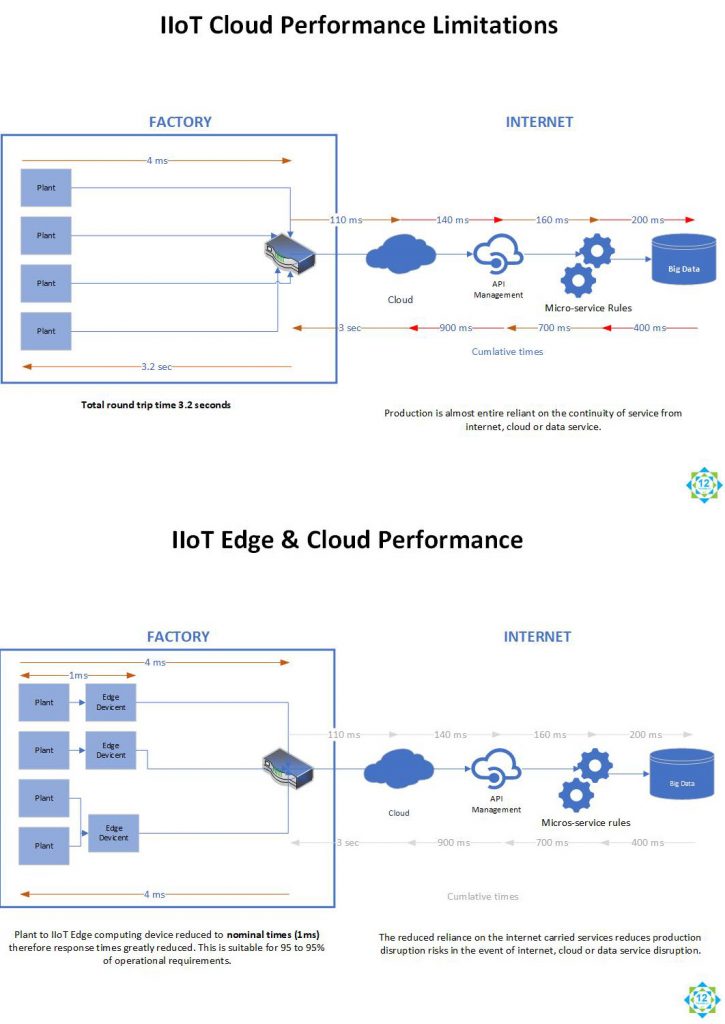Yesterday, as I stood looking at a production line turning out precision metal parts for medical microscopes I was asked why Edge Computing was such a big deal for this factory
At its basic level, edge computing brings computation and data storage closer to the devices where it’s being gathered, rather than relying on a central location that can be thousands of miles away. This is done so that data, especially real-time data, does not suffer latency issues that can affect an application’s performance. In a production situation just two to four seconds delay in machines reacting due to latency can wreck hours of production (and regularly does!).

In addition, companies can save money by having the processing done locally, reducing the amount of data that needs to be processed in a centralized or cloud-based location. It also offers a degree service continuity should a network service or comms become unavailable. The advent of 5G does of course reduce latency, but it does not eliminate it. An essential component for support of URLLC apps, edge-computing infrastructure facilitates optimization of 5G network resources by focusing computational capacity where it is needed the most. Without edge computing, 5G would continue to rely on back-haul to centralized cloud resources for storage and processing thus diminishing much of the otherwise positive impact of latency reduction enabled by 5G.
From a security standpoint, data at the edge can be problematic, especially when it’s being handled by different devices that might not be as secure as a centralized or cloud-based system. As the number of IIoT/IoT devices grow, it’s important that we understand the potential security issues around these devices, and to make sure those systems can be secured. This includes making sure that data is encrypted, both at rest and in transit, access control is tightly defined, Edge gateways used.
Organizations will increasingly rely on edge computing technology in the years to come. One study put just 10% of enterprise data as being created and processed outside of a centralized data centre/cloud in 2018. The same report speculated that the number will climb to 75% by 2025. However, this is an evolving arena with a great many aspects influencing that evolution, one of which is Carrier vs. Enterprise Edge Compute Deployment pro/cons. Companies are experimenting with mny new business models such as the business on site model, in which business customers may pay carriers for infrastructure-as-a-service (IaaS) or Multi-Edge Computing (MEC) platform-as-a-service (PaaS). With either IaaS or PaaS, business customers may be responsible for their own apps and related management or rely on carriers to handle their applications entirely as a managed service.
As you can see from just my few words EDGE matters. 5G and Edge will compliment each other, the former will not negate the latter. Business models will drive further evolution. Virtualization will be a critical component of all communications networks, including both core 5G infrastructure as well as MEC platforms.



